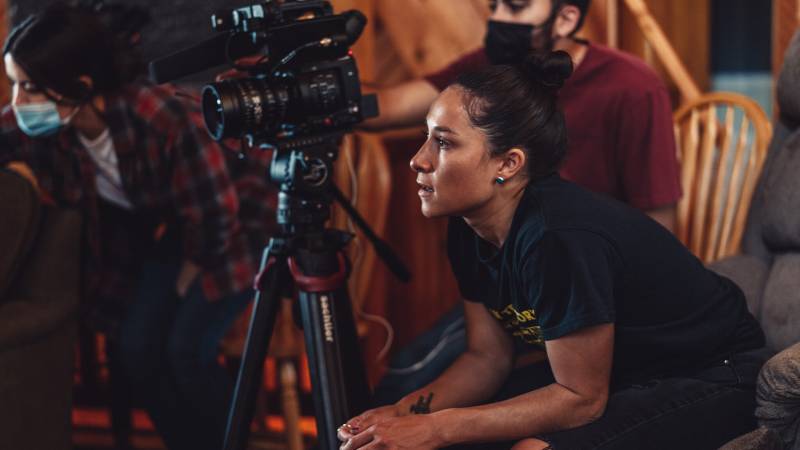Interview with Brit Hensel (Thin Places)
Director Brit Hensel on Thin Places

This Oklahoma-based director, writer and filmmaker has had her work featured in various film festivals, including Sundance, imagineNATIVE, Hot Docs, and Full Frame. She is a citizen of the Cherokee Nation, and the first female enrolled member of the tribe to direct a film selected by the United States’ most prestigious film festival, Sundance. The topics of environment, language, women’s experience, and her people’s connection to the land are very close to her heart.
Hensel has directed two short films and two television series. Her latest creation Thin Places – about a sister aching to hear from a deceased relative, and emerging a stronger person in the process – premiered at the ImageNATIVE Film Festival.
Joshua Polanski – Thin Places was in part inspired by a real story of grief. How autobiographical is the story we see on screen?
Brit Hensel – I wrote Thin Places during my first real experience with grief, after losing someone I loved deeply. Grief can be incredibly isolating, and I struggled with it quietly for a long time. But I think there’s a fundamental human need to be witnessed — to know that our pain, our love, and our losses matter. That they’re not just endured, but transformed into something that can reach and resonate with others.
This wasn’t a film I made because it sounded interesting or fun – I made it because I had to. It felt, in many ways, like a lifeline. Grief is the cost of loving deeply, and it’s something everyone eventually faces. I took the heaviest parts of that experience and buried them in story, in image, in character— especially that of Birdie. Thin Places became a snapshot of that specific season in my life. And now, seeing it in the world, watching it connect with others in their own seasons of grief — that has been incredibly meaningful.
JP – Have you had the chance to show the film to those who were also grieving with you? If so, how did that go? If not, would you like to?
BH – With our first few festivals under our belt, I’ve had the chance to speak with audience members about how the film has resonated with them. There have been many tear-filled conversations where people shared deeply personal stories – how the film brought them back to someone they’ve lost, how it reflected their own experiences of love and grief, and how it offered some sense of healing.
It’s incredibly meaningful to know the film is meeting people where they are — that it’s making space for their feelings, just as it did for mine.
JP – You start indoors, but the last two-thirds of the film all takes place outside and under this almost magically lit sun. The outdoors feels warm. Could you please walk us through the decision of both the outdoor settings and the lighting you opted for?
BH – Anyone who’s seen Days of Heaven [Terrence Malick, 1978] knows how powerful the golden hour can be – it brings a real emotional texture. For me, it’s always felt like a sacred time of day, a moment where magic feels possible.
Continue reading at DMovies.